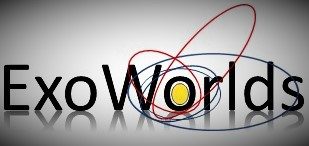Where do we start – we are tourists on a blue, brown, green and white marble orbiting a run of the mill, and frankly, quite ordinary (Good for us as we shall see later) dwarf, yellow main sequence star, astronomers classifiy the Sun as a G2Vd (G2 = photometric or temperature class, V = main sequence & d = dwarf), at this stage we will not go off track by explaining how stars are classified, we will address that later in a seperate section, for now we will concentrate on the solar system, and as we only have one star we can concentrate on that and ignore the other, approximately 20024 stars in the observable Universe.
As far as we know, there is nothing special about our solar system, this was not always the case, and there are still people who claim our solar system holds some unique place, however, based on the thousands of planetary systems we have discovered orbiting other stars, and accounting for “observational bias”, although we have not found a true solar system analogue yet, we have enought that we do not seem to be special, just different.
This is the front page, the introduction – to the solar system, each of the major components of the system we call home will have it’s own page as a sub-page of this. The proposed layout at this time will look like this – please note that bodies, classes of objects, groups, missions and satellites will be added over time so this becomes a real repository of information.
- The Hitch-Hiker’s Guide to the Solar System – Introduction
- Sol
- Mercury
- Venus
- Earth
- Mars
- Jupiter
- Saturn
- Uranus
- Neptune
- Moons of the Solar System
- Earth
- Mars
- Jupiter
- Saturn
- Uranus
- Neptune
- Pluto
- Dwarf Planets
- Asteroids
- The Asteroids
-
- Atira Class
- Main Belt
- Hungaria Group
- Cybele Group
- Hilda Group
- Ceres Group
- Karin Group
- Veritas Group
- Datura Group
- Iannina Group
- Aten Class
- Apollo Class
- Amor Class
- Trojan Class
- Greek Class
- Centaur Class
- Dwarf Planets
- Ceres
- Pluto
- Eris
- Quaoar
- Makemake
- Haumea
- Gonggong
- Orcus
- Sedna
- Proposed Dwarf Planets
- Scattered Disk
- Kuiper Belt
- Oort Cloud
- Proposed Planets
- Manned Missions
- Mercury
- Gemini
- Apollo
- Skylab
- Space Shuttle
- Russian
- European
- Chinese
- Other
- Unmanned Missions
- Mariner
- Voyager
- Pioneer
- Lunokhod
- Venera
- Viking
- Magellan
- SOHO
- Cassini
- Lucy
- Messenger
- Research satellites
- Compton
- IRAS
- JWST
- Hubble
- Spitzer
Clearly this will take some serious work and will take time to get up to where I want it, but it will happen.
If anyone can think of an additional section please leave a comment and wel will see what we can do, the solar system is expanding dramatically and this will be an ongoing task.
